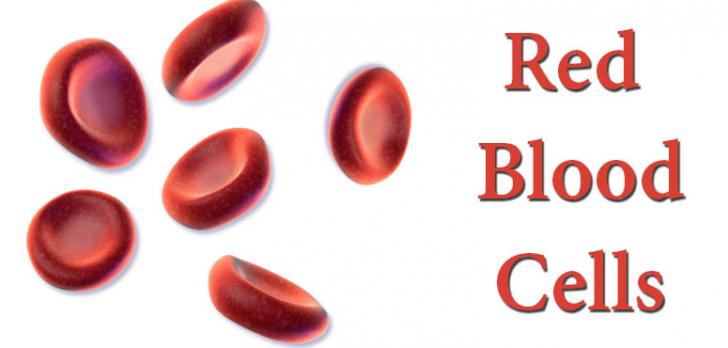Blood corpuscles (blood cells)
The process by which blood cells are formed is called haemopoiesis or haematopoiesis. During embryonic and foetal life, blood cells are formed in yolk sac, liver, spleen, thymus gland, lymph nodes and bone marrow. In the adult, red bone marrow (Myeloid tissue) is responsible for producing red blood cells, granular leucocytes and platelets. Spleen, tonsils, lymph nodes are responsible for producing arangular leucocytes. Haemocytoblasts in red bone marrow give rise to mature blood cells.
Types of blood corpuscles
- Red blood corpuscles (RBC) or Erythrocytes
- White blood corpuscles (WBC) or leucocytes
- Platelets or Thrombocytes
Red blood corpuscles or Erythrocytes
Number: The total number of RBCs per microlitre (1mm3 = 10-6 lit) of blood is called total count of RBCs. Count of RBC per microlitre in humans are
- Adult Man – 5-6 million
- Adult Woman – 4.5-5 million
More RBCs in man than in woman due to fact that woman undergo menstruation. Abnormal rise in RBCs is called Polycythemia. Decrease in the number of RBC is called Erythrocytopenia which causes oxygen shortage in blood and tissues. Low total count of RBCs leads to Anaemia caused by loss of blood (haemorrhage), destruction of RBCs.
Shape: In fish, amphibian, reptiles and birds usually nucleated, oval and biconvex. All adult mammals RBCs are non-nucleated, biconcave and circular shape except Ilama and camel whose RBC is nucleated.
Size: Human RBC is measure about 7-8µm diameter and 1-2µm thick. Amphibian RBCs are the largest among vertebrates. Amphibian and Proteus have largest RBC about 80µm diameter. Smallest RBCs about 1.5 µm diameter in Musk deer.
Colour: The RBCs look yellowish when seen single and red when viewed in bulk. Red colour is due to presence of haemoglobin.
Strucuture: Matured mammalian RBCs don’t have cell organelles including nucleus,mitochondria, ribosome, centrioles and endoplasmic reticulum thus almost entrie cytoplasm is filled with haemoglobin. Due to absence of cell organelles, consumption of O2is very low. Anaerobic respiration occurs in RBCs. Haemoglobin is a conjugated protein and made of two components, such as protein called globin and haeme is an iron (Fe++) porphyrin complex compound. A RBCs has 280 million haemoglobin molecules. The 100ml of blood of normal man conatins 15g of haemoglobin and of normal woman contains 13g of haemoglobin. It has enormous oxygen carrying capacity about 20cm2 oxygen per 100cm3of blood.
Formation: Formation of erythrocytes is called erythrocytopoiesis. Early few weeks of embryonic life primitive nucleated RBCs produced in the yolk sac. In later embryonic stage, RBCs are mainly produced by liver and spleen. From birth onwards, RBCs are produced by bone marrow. Iron and proteins are necessary raw materials for the synthesis of haemoglobin. B12 and folic acid stimulates the maturation of RBCs. Excess of RBCs are stored in the spleen.
Lifespan: The life span of RBCs is about 120 days in mammals. Life span of RBCs in frog is about 100 days.
Function: It helps in transportation of gases. Oxygen is transported by the respiratory pigment called haemoglobin. Oxygenated is bright red and deoxygenated haemoglobin is dark red.

Types of Anaemia
- Pernicious anaemia – Deficiency of vitamin B12
- Sickle celled anaemia – Gene mutation
- Microcytic anaemia – Deficiency of iron
- Megaloblastic anaemia – Deficiency of folic acid and vitamin B12
- Aplastic anaemia – Destruction of bone marrow